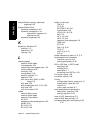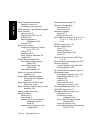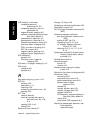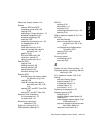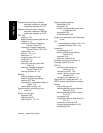
I
D
E
X
N
Index-22 Applied Biosystems
PSD analysis (continued)
composite spectrum,
displaying 8-2, 8-5
composite spectrum, how it is
generated 8-6
fragment labels, applying 8-8
optimum resolution observed near
Max Stitch Mass 8-4
peak detection algorithm 3-5
peak detection, checking 8-10
Peptide fragmentation macro C-9
precursor mass, changing 8-23
PSD, overview of creating 8-10
REF file, creating 8-21
segment labels, applying 8-8
segment traces, displaying 8-3
PSD calibration
equation 8-6
Precursor mass, impact of
changing 8-23
PSD data, in Voyager, displaying 1-13
PSD mode
constants 8-6
equation 8-6
R
Raw data, copying x,y pairs 1-39
RCD file
deleting 2-39
description 1-10
exporting 2-39
extracting information from 1-36
opening 2-39
RCT files
see also Results
name of raw data file result is
derived from 2-38, 2-39,
2-41
opening 2-39, 2-40
saving 2-40
Read-only files, viewing 2-7
Realign, UV trace 4-30
Reapplying instrument calibration 5-22
Recording a macro 6-37
REF files, see Calibration reference file
(REF)
Reference masses, calibration
see also Calibration reference file
(REF)
adding to REF file 5-18
displaying list of 5-10, 8-16
for Voyager Sequence Control
Panel 5-27, 5-28
selecting 5-10, 5-14, 7-17, 8-15,
8-16
References required for Data Explorer
Toolbox (Visual Basic macros
provided) C-3
Related documents xiv
Removing traces
active 2-21
inactive 2-21
Replace mode, setting for added
traces 2-18
Resolution Calculator not displayed 9-8
Resolution, mass
calculating 6-20
command not on menu 9-8
default peak height used 6-20
defaults used in peak
detection 3-24
isotope B-4
isotope, Mariner data 3-53
isotope, Voyager data 3-53
isotope-limited B-5
PSD segment, optimum observed
near Max Stitch Mass 8-4
results 6-22
trend within PSD segments 8-11
Resolution-based peak detection, see
Peak detection,
resolution-based



